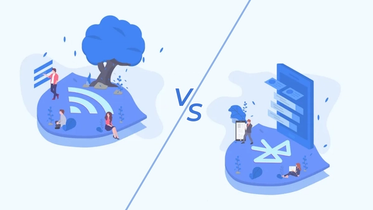A Guide to RFID Technology & How It Is Used
Published: June 2, 2022
13 min read
In this article, you'll learn:
1
📚 Radio Frequency Identification Basics & Use Cases
2
⚙️ Types of RFID Tags: Passive, Active & Co
3
📶 RFID vs NFC vs BLE
4
📲 RFID Integration into your App
5
🔎 Zebra & Tertium: Case Studies
6
💡 Takeaways
Logistics, warehousing, healthcare, retail, finance — these are only a few industries that use wireless networks to automate workflows and increase the efficiency of the business in general. One of the most widespread ones is Radio Frequency Identification (RFID).
It has a reputation as an affordable wireless communication system that allows using all the benefits of such a network on a wide range as well as while being outside of the line-of-sight of the units.
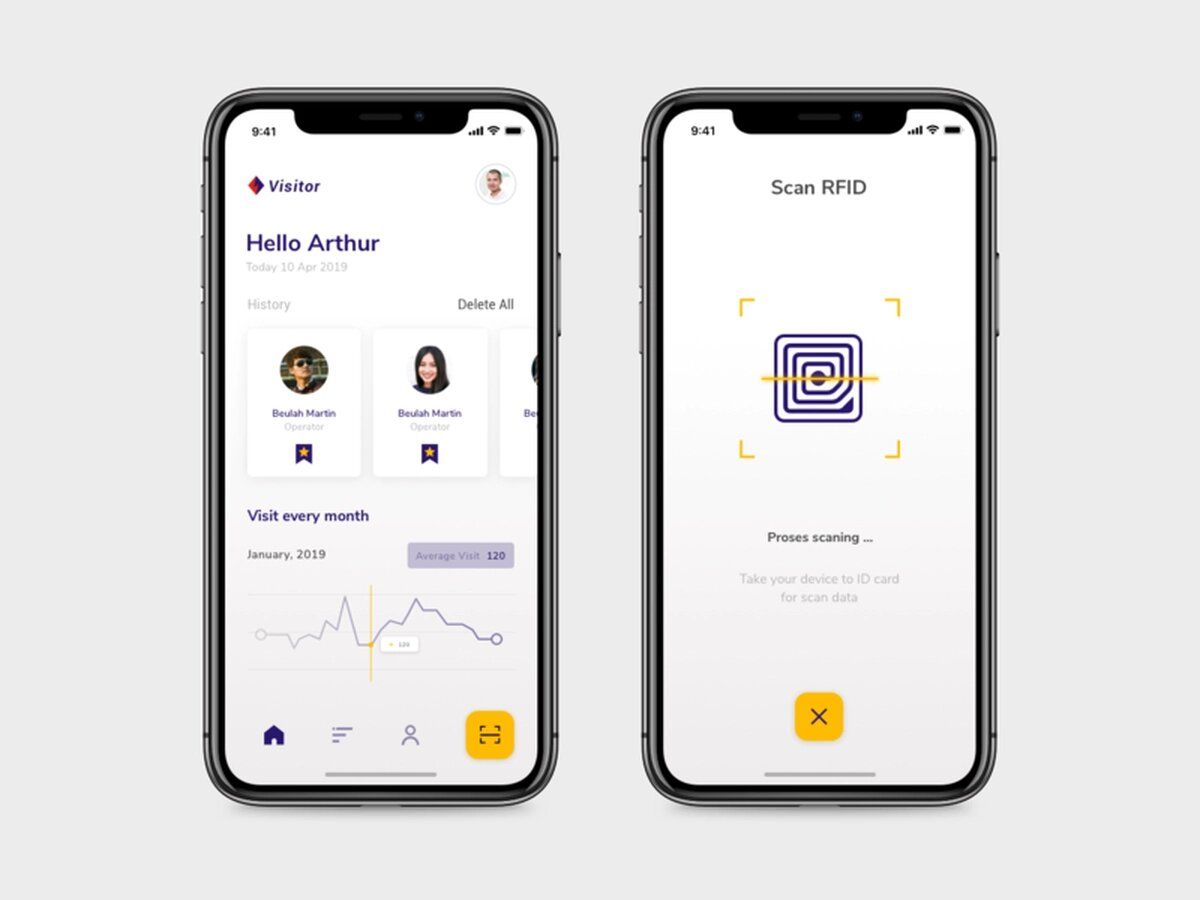
Radio Frequency Identification is a complex system that uses radio waves to help companies automate their business processes (image by Zaenal Abidi)
While being beneficial, building an app that supports such technology requires quite a lot of expertise and knowledge. So, to help you better understand the basics of RFID and how it generally works, we’ve decided to create an extensive guide.
Apart from the basics, we’ll additionally review some interesting cases of how RFID can be used, and talk about different types of it. To prevent confusion, we’ll take a look at another 2 most popular wireless communication systems that are often viewed as an alternative but are in fact highly different in use.
To sum it all up, we’ll talk about how to integrate RFID Tech into your application and what third-party RFID providers there are on the market. Welcome! 🚀
📚 Radio Frequency Identification Basics & Use Cases
To begin with, let’s take a closer look at what RFID actually is. It’s a wireless network that relates to technologies of the AIDC or Auto ID (Automatic Identification and Data Capture) family. As the name says, the technologies of this group identify, communicate, store, and record information with little to zero human intervention.
In general, this is exactly what RFID does — a network of 3 hardware devices (an RFID reader, an RFID tag/smart label, and an antenna) allows scanning and identifying objects by utilizing electromagnetic fields, playing a vital role in IoT in factories and IoT in agriculture to automate tracking and inventory management.
Also, understanding RFID technology is essential for anyone involved in prototyping model in IoT, as it offers insights into how wireless communication systems can be integrated into IoT solutions.
If you're considering developing an IoT application, you might also be wondering how much it costs to create an IoT application, which can vary based on complexity and industry requirements.
That’s exactly where hardware mobile app development services come in handy: they can provide realistic cost estimates and bridge embedded systems to mobile clients.
The real question is how you can use it within your mobile application. And the answer will vary depending on the industry you’re operating in. To give you some inspiration on how you can apply RFID technology, we’ll review some fascinating use cases of it. So, even if you already have a clear understanding of your preferences, you might find ways to enhance them.
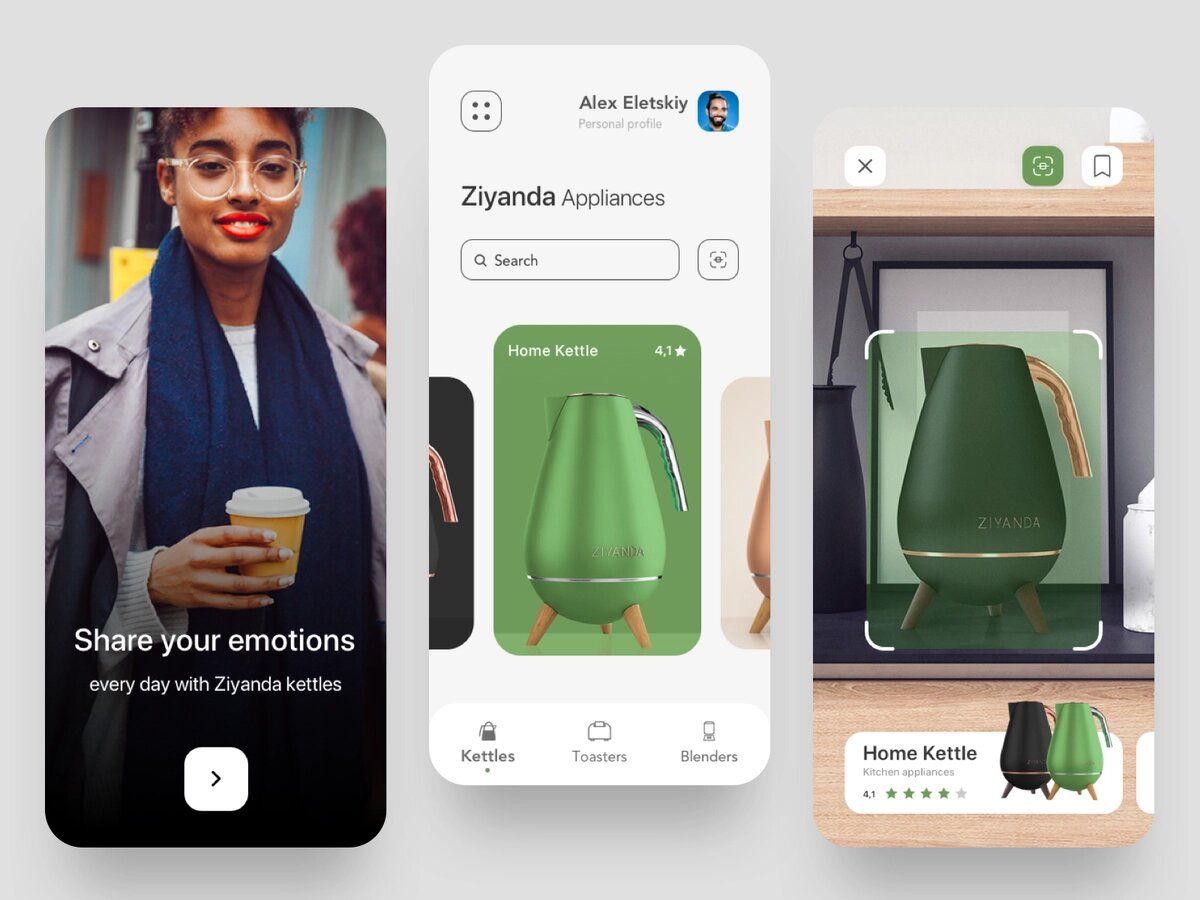
An RFID system can be based on passive RFID tags, active RFID tags, or semi-passive tags (image by Alex Eletskiy)
One of the most popular ways of RFID usage is in fact race timing. Ironically, many racers don’t even realize that they’re being tracked via RFID technology but it’s almost invisible unless racers know where to look.
The tags can be attached to racers’ backs or chests along with number stickers that users get when joining the race. Alternatively, they can be wrapped around their ankles, wrists, or heads. Normally, ankle or wrist tags are used for races including the swimming part because they are more “sticky”.
One of the leading providers is RFID Race Timing Systems. They provide all the hardware needed for the system to function flawlessly as well as the dedicated timing software.
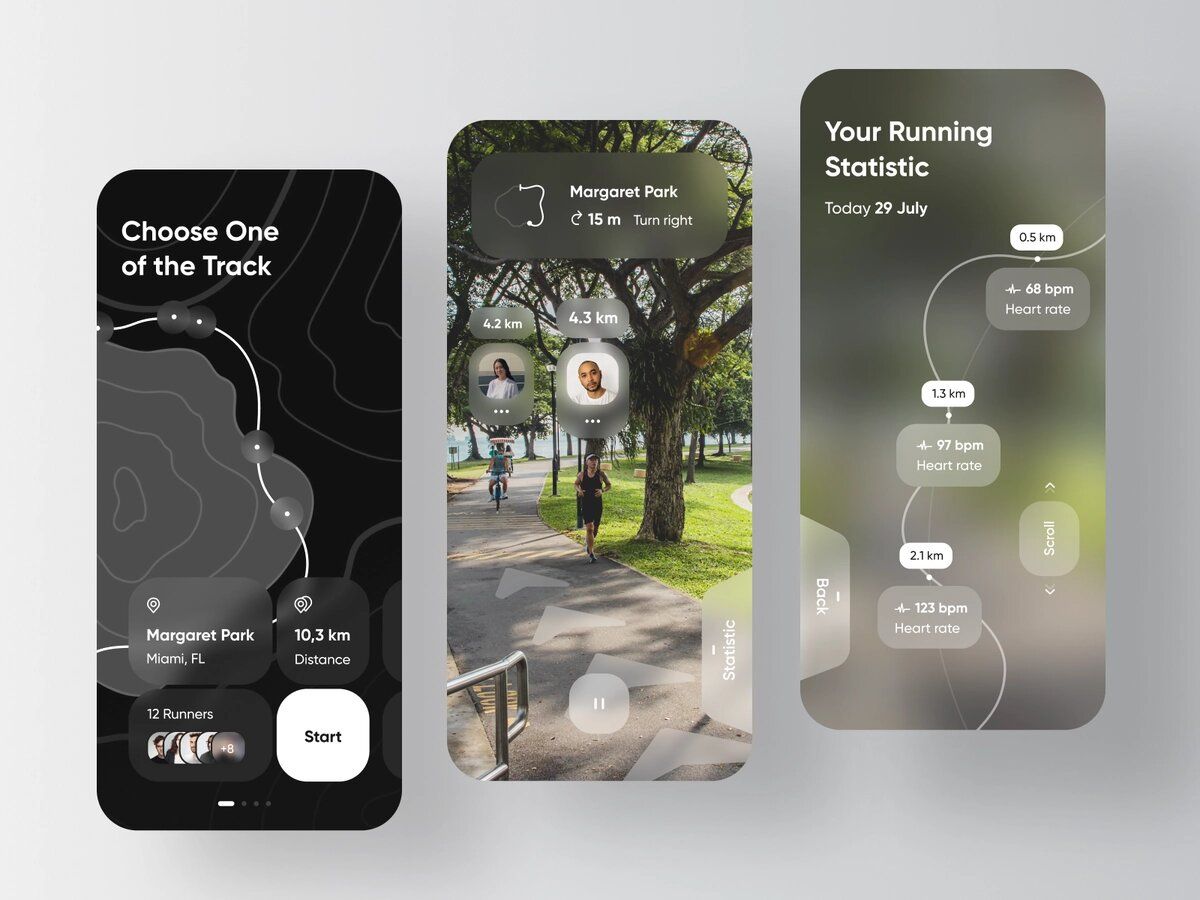
RFID applications can be used in such industries as inventory tracking using smart labels, supply chain management, and other sectors for process automation purposes (image by RD UX/UI)
Another attention-grabbing use case of RFID tags is uniform and linen tracking. Generally speaking, companies and organizations with a lot of uniform or linen units (hotels, restaurants, cruise businesses, etc.) use RFIDs to track the duration of use, the number of washing times, prevent thefts, etc.
For example, Mr. C Hotel Beverly Hills uses RFID tags from Linen Tracker to keep track of their luxury linens when sending them out for laundry (and receiving them back) since the hotel uses external services for this matter.
The tags are sewn into each piece of linen sheets, pillowcases, towels, or tablecloths. Linen Tracker doesn’t provide tracking tools for digital monitoring so the hotel additionally uses TrackX (previously — Fluensee) software to perform the management. This way, the hotel was able to reduce the number of missing items from an average of 20-30% to as little as 3%.
⚙️ Types of RFID Tags: Passive, Active & Co
There are 2 main ways of categorizing or differentiating RFID technology and smart labels — operating frequency band and system types. In this section, we’ll review both categorization techniques and talk about use cases for each type.
Two important things to mention before continuing. Firstly, the types don’t exclude each other, they’re complementary. For example, there can be a passive (system type) low-frequency (frequency) RFID tag. Secondly, each tag type has a corresponding interrogator type with the respective name (low-frequency RFID tag — low-frequency interrogator).
Plus, all the tech stuff we’ll be talking about isn’t something you have to perfectly understand. Our goal is to give you the basics so you can easily define and communicate your business needs and be on the same page with the stakeholders from the technology side of your company.
Operating Frequency Band
RFID tags (or smart labels) can be divided into low-frequency (LF), high-frequency (HF), and ultra-high-frequency (UHF) bands. Long story short, frequency, in this case, refers to the size of the radio waves that enable communication between RFID system components.
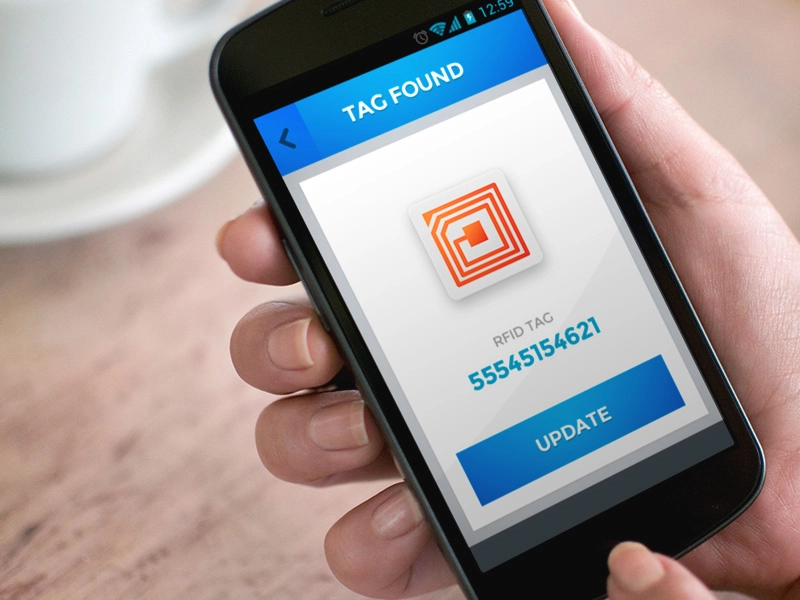
RFID tags and barcode readers can be divided (into passive and active RFID tags, for example) according to system types (image by Sajeer Mohamed)
In the following table, we are going to review these 3 types and talk about their usage in various industries.
Frequency | Range | Description |
|---|---|---|
Low-Frequency (LF) RFID tags | 30 KHz to 300 KHz | It’s the most “ancient” RFID tag type. Out of the 3, they have the shortest read range and slowest data transfer speed. Plus, they usually store small amounts of data. It’s also complicated to read multiple LF tags simultaneously Their main benefit, however, is the fact that such radio waves have the lowest susceptibility to outer interferences. It makes them perfect for use with objects with water or other liquids, metal, animal tissue, wood, etc. One of the main use cases is asset tracking for industries with high concentrations of interference factors (like healthcare or automotive). |
High-Frequency | 3 to 30 MHz | This frequency band has a longer read range and higher memory capabilities, compared to LF. Plus, they enable the reading of several tags simultaneously. The manufacturing of such an RFID tag is easier since they’re very thin and require fewer amounts of material. Generally, they can be used in industries with multiple interference factors, but they’re affected by pure metal objects when there’s little distance between RFID elements and the object. Taking its features into account, HF RFID is mostly used for cataloging purposes (libraries, media companies, etc.), ticketing systems, and payment systems. |
Ultra-High Frequency (UHF) RFID tags | 300 MHz to 3GHz | UHF RFID tag & RFID reader allow the reading of multiple tags at the same time and have the longest reading range out of all 3 frequencies. They’re the cheapest and easiest ones to produce. However, they also have the highest sensibility to outer interferences. The UHF is also called supply chain frequency as it’s often used for industries with voluminous supply chains and warehouses. Lucking, many RFID manufacturers are actively working towards reducing the sensibility of UHF RFIDs so that it’ll be possible to benefit from wide ranges without worrying about metal objects or liquids in between the tag and the interrogator. |
There’s another type of operating frequency band that’s often not included in the type lists but still has quite a broad application range within the industry — microwave frequency. Its range covers frequencies from 1 to 10 GHz. In comparison to UHF RFID, they’re easier to use with metal objects because of their shorter wavelength, but generally, they’re very similar to UHF.
One of the reasons why so few providers manufacture microwave frequencies is the fact that they’re poorly standardized, which makes them more complicated to produce and implement into business flows.
System Types
Now, let’s complement the RFID categorization with active, passive, and semi-passive RFID tags.
So, in active RFID systems, tags are equipped with their own power source (normally, a built-in battery) and data transmitter (transfer range can be up to 100 meters). Because of that, they’re pretty bulky and expensive to produce. Thus, they’re most often used to track high-value units or large-scale assets — reusable containers, trucks, medical equipment, etc.
In passive RFID systems, tags are kind of inactive since the interrogator is responsible for sending out communication signals. The communication happens after tags use signals from interrogators to power on and then reflect them back. Passive systems can communicate at a maximum 10-meter distance (typically).
They are much smaller and require significantly fewer materials to produce, which makes them an affordable solution. Their range of use cases includes file tracking, security and access control, warehouse management via labeling, race timing, etc.
There’s also a mixed type of RFID system called semi-passive or battery-assisted. It’s basically a passive RFID that contains the most crucial feature of the active one (a power source). The main difference is that battery-assisted systems don’t use energy from transmitters to power on. Instead, they do it via the power source and then reflect all the energy that the interrogator sends out.
What’s important for you as a potential user is that battery-assisted ones enable higher ranges of communication (compared to passive ones), but increase manufacturing costs.
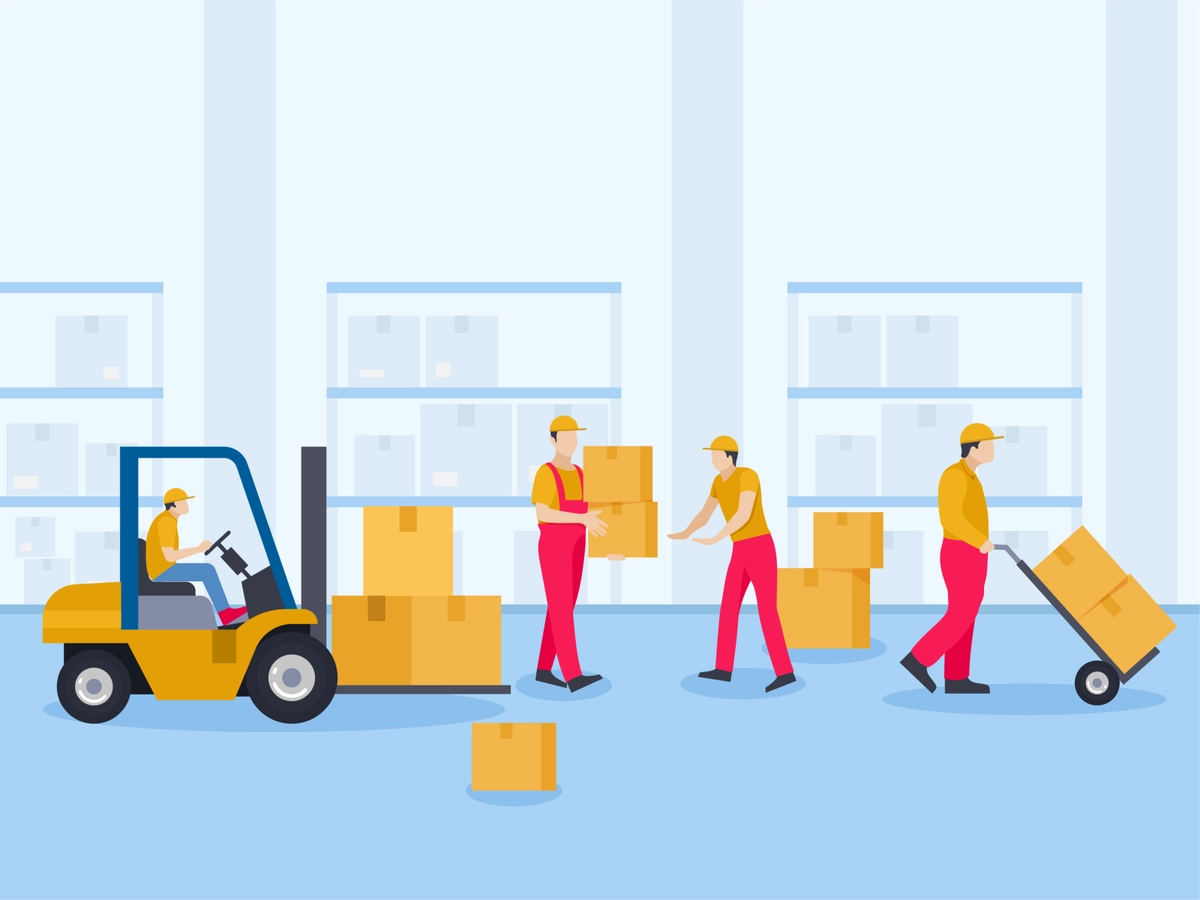
The answer to the “How does RFID work” question directly depends on the hardware type (image by Graphic Mall)
To fully close up the categorization part, we’ve correlated the operating frequency bands and system types since not all of them are compatible with each other:
Low-Frequency (LF) RFID tags | Passive |
High-Frequency | Passive |
Ultra-High Frequency | Active for 433 MHz frequency, passive and semi-passive for 860-960 frequency |
Microwave Frequency | Active, Passive, Semi-Passive |
📶 RFID vs NFC vs BLE
NFC and BLE are often the networks that get compared with RFID so we thought it might be useful to discuss how they correlate and their differences to prevent possible confusion.
NFC
Let’s start with NFC (Near-Field Communication). Firstly, it’s essential to mention that NFC isn’t something separated from RFID — it’s in fact, a subcategory of High-Frequency RFID systems.
Even though it’s related to RFID, NFC is often considered a whole unique technology since it uses a highly specific frequency for communication (13,56 MHz, which isn’t really important but good to know). Additionally, NFC has a much shorter read range, requiring the tag and the reader be no more than a couple of cm away from each other.
Another special feature of NFC is that the technology doesn’t allow reading multiple tags at once and can handle only 1 at a time. Its key advantage, however, is significantly bigger storage capabilities, that allow communicating and storing large amounts of data.
As for the use cases, one of the most widespread ones is contactless payments. NFC can also be used for marketing promotional campaigns. For example, companies can attach NFC tags to product labels so customers can scan them with their phones and get detailed product-specific information.
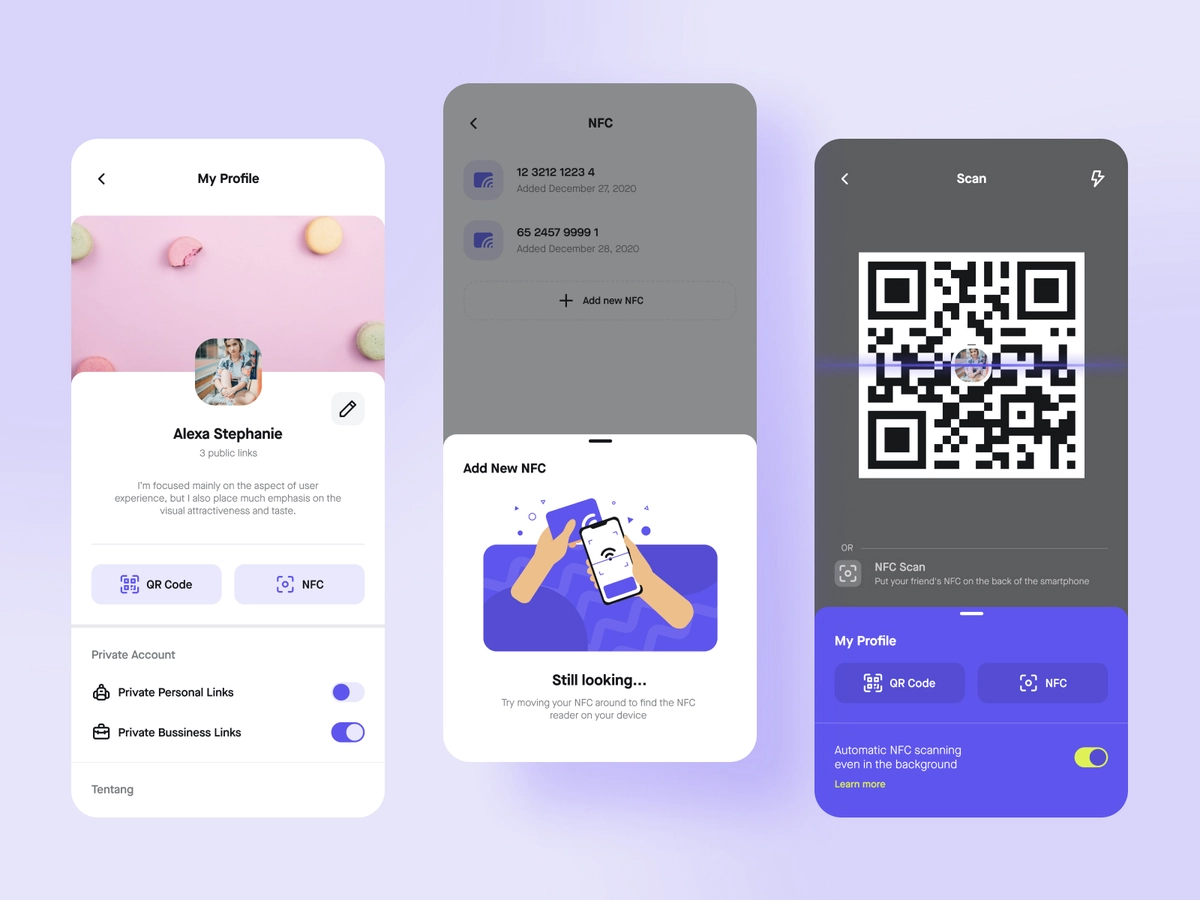
RFID tag data can be complemented by data collected through and NFC tag that’s often built into each modern mobile device (image by [Afdolash] (https://dribbble.com/afdolash){target=_blank rel="nofollow noopener"})
BLE
Bluetooth Low Energy (BLE) is a completely different technology, even though its application is also location tracking for the most part (just like RFID). Compared to RFID (and regular Bluetooth), BLE focuses on providing an affordable solution that requires little maintenance, making it ideal for businesses seeking BLE mobile app development services.
For developers working with RFID and BLE, understanding BLE programming in Android helps in building efficient applications that communicate with low-energy devices while maintaining power efficiency.
Firstly, BLE has an extremely low energy consumption, which is why companies don’t worry about changing or charging the battery for a very long time. Plus, BLE integration is easier to implement, compared to RFID. Another important difference is that both devices that communicate via BLE technology have to be equipped with BLE. You can learn more about BLE in our comparison guide of Bluetooth and Bluetooth Low Energy.
So, to sum it all up, we’ve created the table with a brief comparison of use cases for each technology:
Technology | Use Case |
|---|---|
RFID | Since RFID has multiple types and categories, it’s pretty hard to define one general use case when you should choose it over BLE. However, what we can say is that RFID technologies are definitely a great option for non-dynamic location tracking. Non-dynamic in this case means that users only get updated on tags’ locations but not their real-time movements. |
NFC | The use case is pretty clear and distinct — if you have a business process that allows short read ranges and scanning one tag at a time but required large data storage capabilities, NFC might be the most suitable technology. |
BLE | BLE is perfect you need something low-cost and low maintenance with high resilience towards outer interference factor. However, communication normally happens with only one device at a time and can’t handle huge amounts of data. The main use case is various Internet of Things industries and real-time location tracking. |
📲 RFID Integration into your App
And here comes the question of how you can implement the RFID technology into your app software. To begin with, you luckily don’t have to build your own RFID hardware. You can easily find third-party providers who offer hardware as well as APIs/SDKs for the software.
APIs work as intermediaries between a user and an application. So, in the RFID cases, APIs will enable your app to control RFID devices. For example, to turn devices on and off, check their status, or use it in connection with RFID hardware to get instant information after scanning (like with NFC).
Another important technical thing to mention is the difference between an API and an SDK, which is quite simple. An API is a code that allows communication between applications, an SDK is a set of development tools that allows building an app for a certain API or hardware. That’s it.
If you’d like to get to know more about APIs, there’s an amazing explanatory video that we recommend watching:
Some of the most popular APIs for enabling apps with RFID control functionality are Zebra and Universal SDK. It’s highly important to pay attention to the technologies that various providers work with since most of them support only certain devices.
For example, Tertium provides a development kid that only works with BlueBerry LE UHF and NFC scanners. To provide you with a better understanding of the differences that providers might have, we’ll review Zebra and Tertium in the next section.
Normally, if a hardware provider doesn’t offer an API/SDK themselves, they might refer you to some trusted partners. Otherwise, you either have to look for a provider on your own or contact your Tech Partner so they can help you with the search.
But it’s not likely to happen — third-party providers care for their clients’ experience and always try to reduce the amount of “self-research” they have to do. In any case, feel free to contact Stormotion. Our team would be happy to help you with any issue you might face during the solution development process!
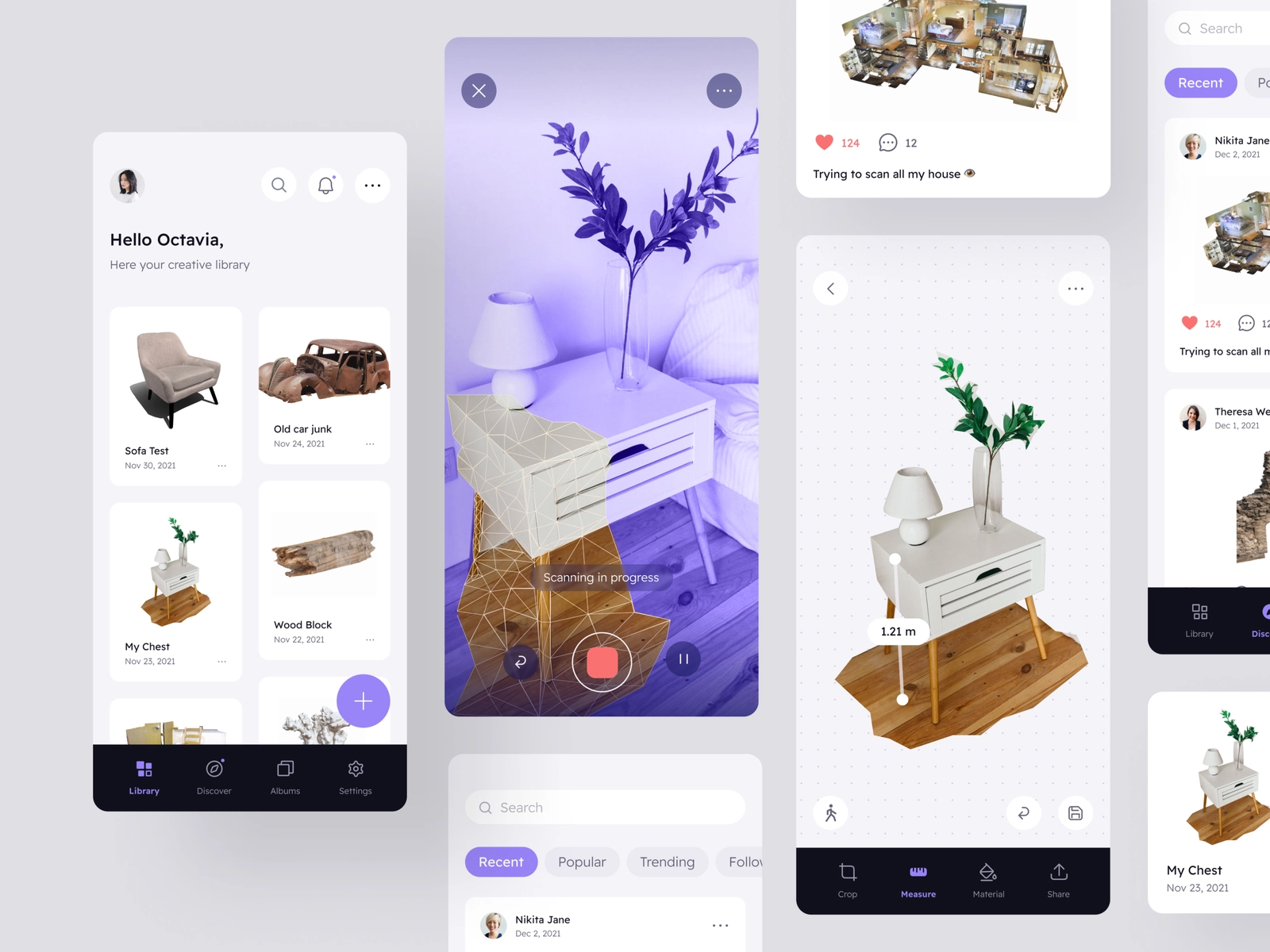
Successful RFID implementation can bring your company numerous benefits from process automation to production cost reduction (image by Fireart Studio)
So, to structure what we’ve just talked about, here’s a list of steps that you might need to take for RFID features implementation:
- Think about what RFID type suits your business the most.
- Find an RFID hardware provider (in accordance with the chosen type, of course) so you can give your users a ready-to-use set of devices.
- Make sure that your hardware provider offers an API/SDK to enable communication between the devices and your application. If that isn’t the case, think about alternatives.
- Find a Tech Partner or create an in-house development team to build an application with RFID API integration. This step doesn’t necessarily have to be done after the first 2. You can start the development journey with a Tech * Partner by your side. Generally, the earlier you partner with a decent developer, the better it is for your project.
Build an app and/or perform the integration.
Depending on your business and compatibility needs, the development stage you’re at, whether or not you want some additional integration, and many other aspects, it’s possible that the process will be somewhat different.
🔎 Zebra & Tertium: Case Studies
Last but not least, let’s take a look at 2 RFID hardware and SDK providers (with completely different Value Propositions) and review their services. You might find some inspiration for your own business ideas or think about what you would avoid when working with your own clients.
Let’s start with Zebra. It’s one of the most widespread RFID technology providers. Generally, they sell both hardware and software solutions, and their offer is extremely broad. Numerous smart tag options, mobile computers and tablets, printing devices, various scanning technologies, mobile robots, and many others.
As for RFID technology, Zebra offers multiple products — handheld and fixed readers, antennas, printers, tags, and portals for automatic tag registering. As for the software part, you can take a look at all the available SDKs and tools on this page.
What allows Zebra to stand out is its diversity of services and full-service packages. Whatever their customers might need — RFID hardware, software, their maintenance — Zebra can provide it.
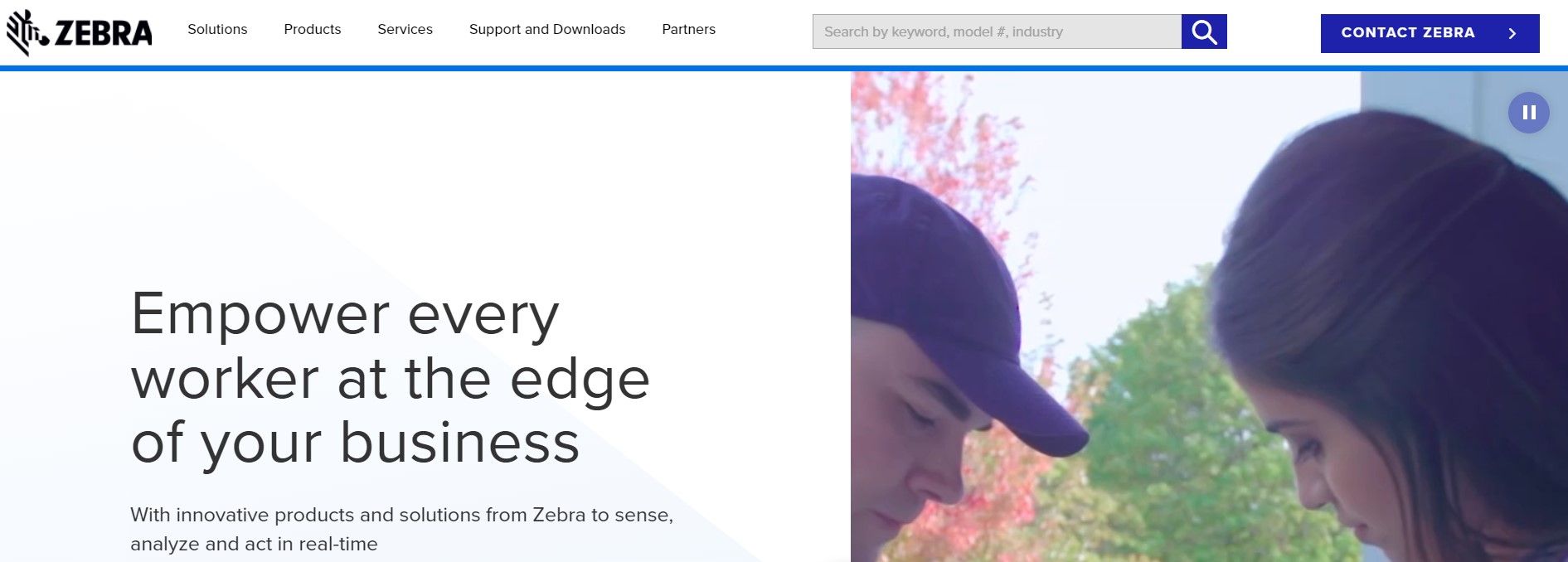
Zebra provides all the needed services from a transponder, an RFID reader, and RFID tags to SDK implementation (shots from Zebra)
Our second candidate Tertium has a rather limited number of products to offer to its customers. These are High-Frequency and Ultra-High-Frequency mobile RFID readers as well as desktop industrial RFID tech fully prepared for use. Their readers are additionally equipped with the BLE communication standards.
As for the software part, Tertium doesn’t offer any dedicated software. Alternatively, they provide an SDK for their products that their clients can get and build into their applications. So, as you can see, there’s not that much to review here because the company has quite a limited sector they’re operating in.
And it’s not bad at all. Their main advantage is clear specialization and an intuitive website that explicitly tells visitors what Tertium’s services are and what value they offer their customers.
💡 Takeaways
RFID applications market is very broad and can be used for multiple use cases. Plus, it’s still dynamically developing — one of the main trends as of now is its closer integration with cloud services.
Apart from the RFID technologies diversity, there are also quite a lot of alternative wireless networks. Thus, it’s highly important to understand your own business needs so as to find the best fitting solution for your use case.
So, if you have any questions on finding an appropriate Tech Stack for your business needs, or have any questions regarding the solution development, feel free to reach out. We’d be happy to help you!
Building Apps for EV, IoT, Fitness & Digital Health since 2017.
Need a Dev Team that gets things done?
Our clients say
![Stormotion client Pietro Saccomani, Founder from [object Object]](/static/40e913b6c17071a400d1a1c693a17319/b0e74/pietro.png)
They make the whole business work for us, and their improvements are fundamental to our operations. They’re reliable, honest, and willing to try new things that will help us. We appreciate how flexible and easygoing they are.
Pietro Saccomani, Founder
MobiLoud
Was it helpful?
Read also

